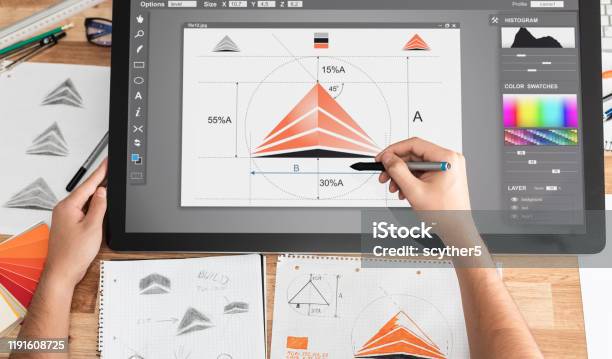
In the world of small business, a strong logo is crucial for establishing a memorable and professional brand identity.
This article dives into the essential tips, factors, and psychology behind small business logo design.
From understanding the significance of color and typography to incorporating brand identity, these must-know essentials will equip entrepreneurs with the knowledge to create impactful logos that resonate with their target audience.
Discover the power and importance of a well-designed logo in this informative and persuasive piece.
Tips for Creating an Impactful Small Business Logo
When creating a small business logo, it is crucial to always consider the impact it will have on your target audience. A well-designed logo can be a powerful tool in attracting customers and creating brand recognition.
To create an impactful small business logo, there are a few tips that can help you along the way. First, simplicity is key. A clutter-free design will be easier for people to remember and recognize.
Secondly, choose colors wisely. Different colors evoke different emotions and can greatly influence how your brand is perceived.

Additionally, make sure your logo is scalable and versatile, so it can be easily used across various platforms and mediums.
Lastly, consider incorporating elements that reflect your brand's unique personality or values. By following these tips, you can design a memorable logo that leaves a lasting impression on your target audience.
The Importance of a Strong Logo for Small Businesses
A strong logo is of utmost importance for small businesses as it plays a significant role in brand recognition and establishing credibility.
A well-designed logo helps differentiate the business from competitors, giving it a competitive advantage.
Additionally, a strong logo helps build customer loyalty by creating a memorable and recognizable brand identity.
Brand Recognition and Credibility
With regards to small businesses, the importance of a strong logo cannot be overstated in terms of building brand recognition and establishing credibility. A well-designed logo acts as the face of the company, creating a visual representation of the brand image. It becomes a symbol that customers can recognize and associate with the business, helping to build brand recognition and recall.
Moreover, a strong logo also communicates trustworthiness and reliability to potential customers. When a small business presents a professional and visually appealing logo, it instills confidence in consumers, making them more likely to trust the company and its products or services.
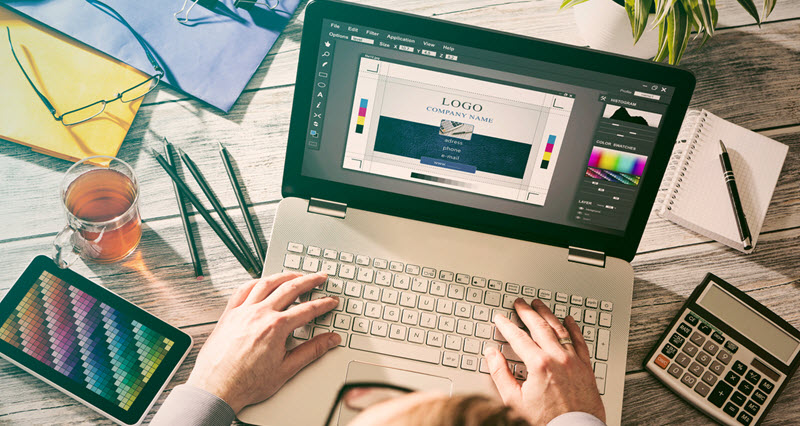
A strong logo not only helps in creating a positive first impression but also plays a crucial role in building a reputable and credible brand identity.
Differentiation and Competitive Advantage
The importance of a strong logo for small businesses lies in its ability to differentiate and provide a competitive advantage in the market. In a saturated business landscape, standing out from the crowd is crucial for success.
A well-designed logo helps small businesses carve out a unique identity and position themselves strategically in the market. By employing effective differentiation strategies, such as creating a distinctive visual brand identity and communicating a compelling brand message, small businesses can set themselves apart from their competitors.
A strong logo not only helps in creating brand recognition and credibility, but it also helps in capturing the attention of potential customers, building trust, and establishing a positive perception in the minds of consumers. It becomes a powerful tool for competitive positioning and gives small businesses an edge over their rivals.
Building Customer Loyalty
To foster customer loyalty, it is essential for small businesses to understand the importance of a strong logo and its impact on brand perception and recognition.
Building customer relationships is crucial for the long-term success of any business. A strong logo acts as the face of the brand, creating a memorable and recognizable image that customers can connect with. It helps to establish trust, credibility, and professionalism, making customers more likely to choose the brand over its competitors.
A well-designed logo also reflects the values and personality of the business, attracting customers who resonate with its message.
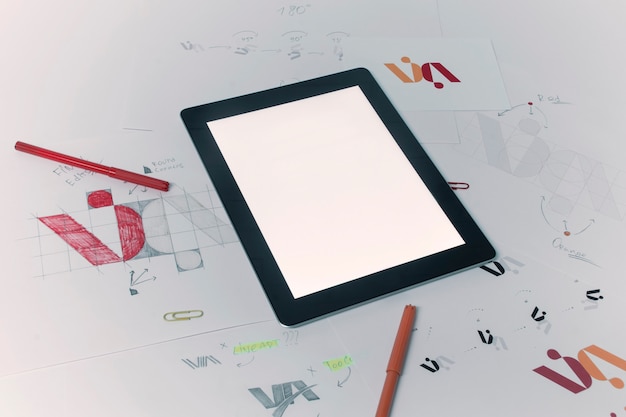
Key Factors to Consider During the Logo Design Process
During the logo design process, careful consideration of various factors is crucial for creating a successful and impactful small business logo. To ensure a logo that effectively represents your brand and resonates with your target audience, keep the following key factors in mind:
Simplicity: A simple logo is memorable and easily recognizable, making it more likely to leave a lasting impression on customers.
Relevance: Your logo should reflect the nature of your business and convey the right message to your audience. It should align with your brand identity and values.
Versatility: Your logo should be adaptable to different mediums and sizes, without losing its impact or legibility. This ensures consistent branding across various platforms.
Timelessness: A logo that withstands the test of time is essential for long-term success. Avoid trends and opt for a design that remains relevant and timeless.
Different Ways to Present Your Small Business Logo
When it comes to presenting your small business logo, there are various ways to make a lasting impression.
Logo placement options, such as on your website, business cards, or signage, can help increase brand visibility and recognition.

Additionally, exploring logo size variations can ensure that your logo looks great across different platforms and mediums.
Logo Placement Options
While considering the various options for presenting your small business logo, it is important to explore different placement strategies. The placement of your logo plays a crucial role in creating brand recognition and leaving a lasting impression on your target audience.
Here are four best practices for logo placement that can help you make the most impact:
Top left corner: Placing your logo in the top left corner of your website or marketing materials is a common and effective strategy. This is because people tend to read from left to right, and placing your logo in this prominent position ensures it is one of the first things they see.
Centered: Another option is to place your logo in the center of your materials. This can create a balanced and visually appealing composition, drawing attention to your brand.
Bottom right corner: Placing your logo in the bottom right corner can be a subtle yet effective way to showcase your brand. It allows for other important content to take the spotlight while still maintaining brand presence.
Watermark: Using your logo as a watermark can add a touch of professionalism to your materials. It also ensures that your brand is visible without being intrusive.
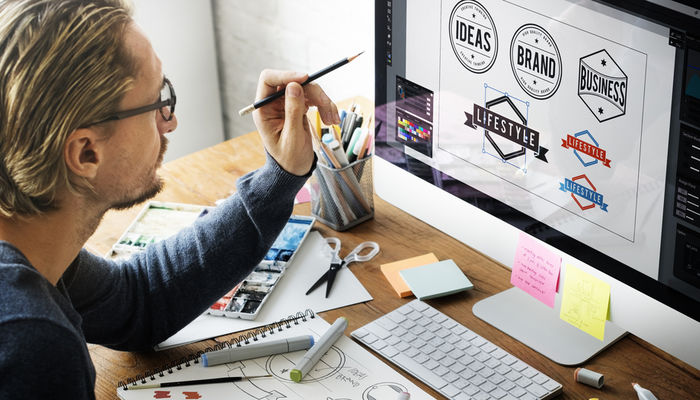
Logo Size Variations
To effectively showcase your small business logo, it is essential to explore different ways to present it, including variations in size. Logo size considerations and scalability play a crucial role in ensuring that your logo appears visually appealing and professional across different platforms.
When designing your logo, it is important to keep in mind that it should be easily recognizable and legible, regardless of its size. A logo that is too small may lose its impact and be difficult to read, while a logo that is too large may overpower the design and look unbalanced.
It is also important to consider the visibility of your logo on various platforms, such as websites, social media, and print materials, to ensure that it remains clear and eye-catching. By experimenting with different size variations, you can find the perfect balance that allows your logo to shine on every platform.
The Significance of Color in Small Business Logo Design
The choice of color plays a crucial role in enhancing the impact and effectiveness of small business logo designs. Colors have the power to evoke emotions, create associations, and convey messages. Here are four reasons why color is significant in small business logo design:
Emotional Connection: Different colors elicit different emotional responses. For example, red symbolizes energy and passion, while blue evokes trust and reliability. By selecting the right color, small businesses can establish a strong emotional connection with their target audience.
Brand Personality: Colors can help define a brand's personality. Vibrant and bold colors may be suitable for a youthful and energetic brand, while soft and muted tones may be more appropriate for a sophisticated and elegant brand.
Brand Recognition: Consistent use of color in a logo helps in brand recognition. It allows customers to associate a specific color palette with a particular brand, making it easier for them to identify and remember the business.

Differentiation: Color can help small businesses stand out from their competitors. By using unique and distinctive colors, a logo can catch the attention of potential customers and make a lasting impression.
The Role of Typography in Small Business Logo Design
Typography plays a pivotal role in the creation and impact of small business logo designs. It is not just about choosing a font; it is about creating a visual language that communicates the essence of the brand.
The right typography can evoke emotions, convey a message, and leave a lasting impression on customers. When combined with the role of color, typography can enhance the overall design and create a cohesive and memorable brand identity.
In recent logo design trends, we have seen a shift towards minimalistic and clean typography, as well as the use of custom lettering and creative typography layouts.
Small businesses should carefully consider the typography they use in their logo design to ensure it aligns with their brand values and appeals to their target audience.
Understanding the Psychology Behind Small Business Logo Design
While small business owners may not realize it, the psychology behind logo design plays a crucial role in attracting and connecting with their target audience. By understanding the psychology behind logo design, small business owners can create a logo that not only looks visually appealing but also resonates with their customers on a deeper level.
Here are four key factors to consider when incorporating logo design psychology into your small business logo:

Color Psychology: Different colors evoke different emotions and can influence how customers perceive your brand. For example, blue is often associated with trust and reliability, while red can evoke feelings of energy and excitement.
Shape Psychology: The shapes used in your logo can convey certain meanings. Curves and circles can represent unity and harmony, while straight lines and sharp angles can convey strength and stability.
Typography Psychology: The font choice in your logo can communicate the personality and values of your brand. Serif fonts can give a more traditional and sophisticated impression, while sans-serif fonts can feel modern and sleek.
Symbolism: Incorporating symbols or imagery into your logo can create a sense of association and meaning. Symbols can represent ideas, values, or concepts that are important to your brand, helping to establish a connection with your target audience.
Effective Ways to Incorporate Brand Identity Into Your Small Business Logo
To effectively incorporate brand identity into your small business logo, consider utilizing elements that reflect your company's values and mission. One key way to do this is by incorporating symbolism that resonates with your target audience.
Symbolism can be a powerful tool in communicating your brand's personality and values. For example, if your business is focused on sustainability, you could incorporate a leaf or tree symbol into your logo design.
Another important aspect to consider is choosing the right font. The font you select can communicate a lot about your brand's personality. For instance, a bold and modern font may convey a sense of confidence and innovation, while a more traditional font may suggest reliability and trustworthiness.
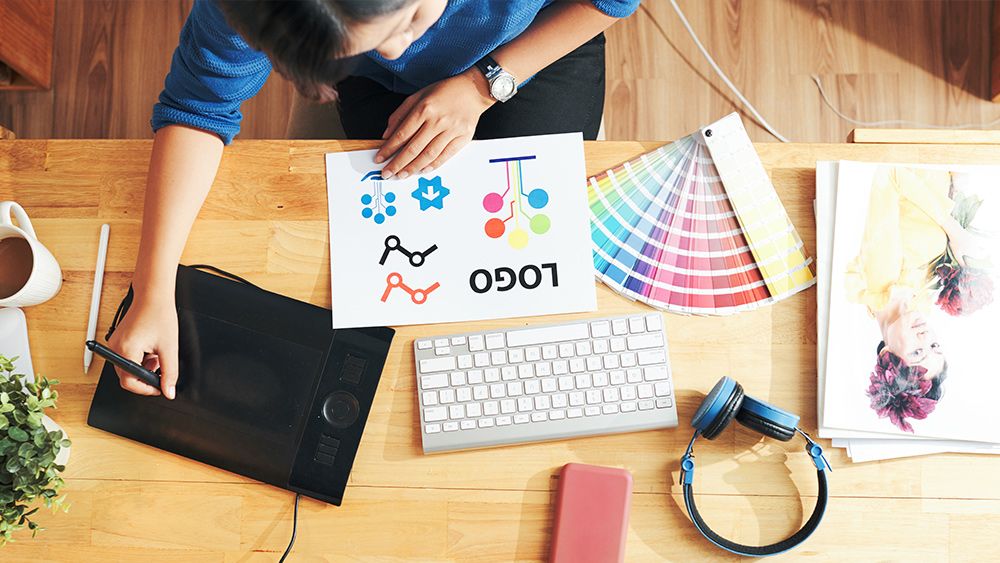
Frequently Asked Questions
How Can I Trademark My Small Business Logo?
Trademarking your small business logo involves going through the trademark registration process. By doing so, you can protect your logo from being used by others and gain exclusive rights to its use. This offers numerous benefits, such as brand recognition and legal protection.
When it comes to designing a small business logo, there are various logo design software and online logo makers available that can help you create a professional and unique logo for your brand.
Can I Use a Stock Image or Template for My Small Business Logo?
Using stock images for a small business logo can save time and money, but it also comes with limitations in terms of uniqueness and customization. Using a template may provide a starting point, but it may not accurately represent your brand identity.
How Much Should I Expect to Pay for Professional Logo Design Services?
The cost of professional logo design services can vary depending on various factors such as the complexity of the design, the experience and reputation of the designer, and the level of customization required. It is important to consider these factors when determining your budget for logo design.
Are There Any Legal Considerations I Should Be Aware of When Designing My Small Business Logo?
When designing a small business logo, it is crucial to be aware of the legal requirements and potential copyright infringement issues. Understanding these considerations will help protect your brand and avoid any legal complications in the future.
 Digital Art InstructionDIY Infographics DesignMobile Game ArtworkPersonalized Logo Design3D AnimationeBook Covers DesignPrivacy PolicyTerms And Conditions
Digital Art InstructionDIY Infographics DesignMobile Game ArtworkPersonalized Logo Design3D AnimationeBook Covers DesignPrivacy PolicyTerms And Conditions
